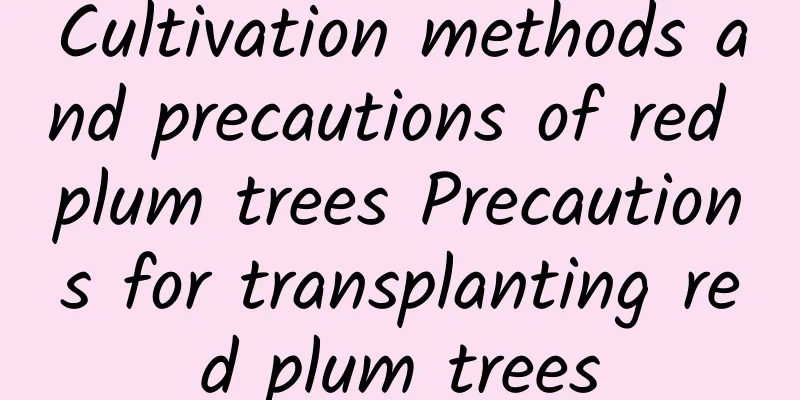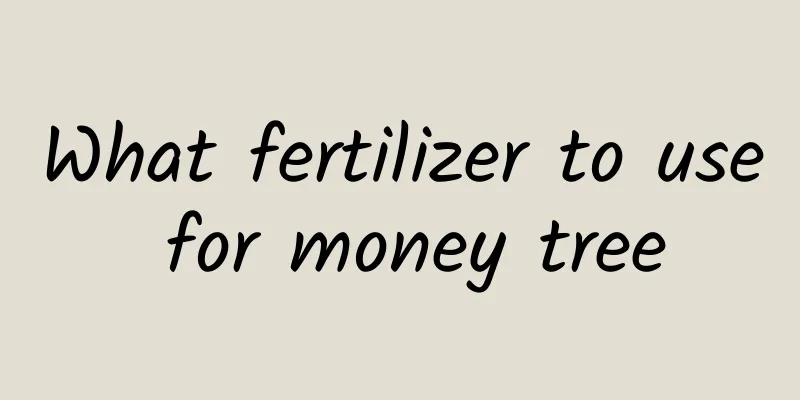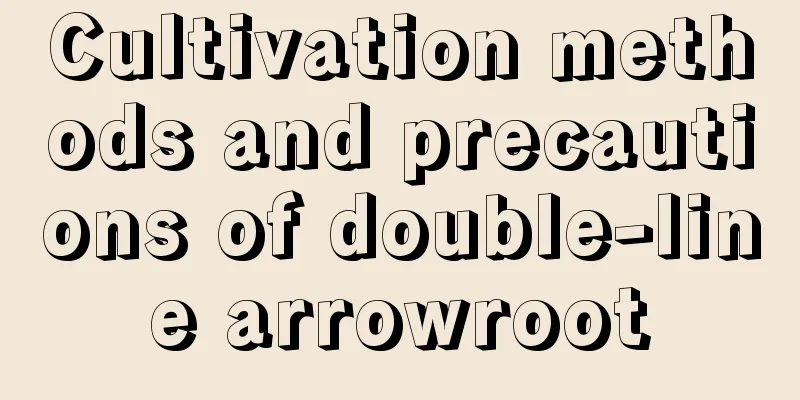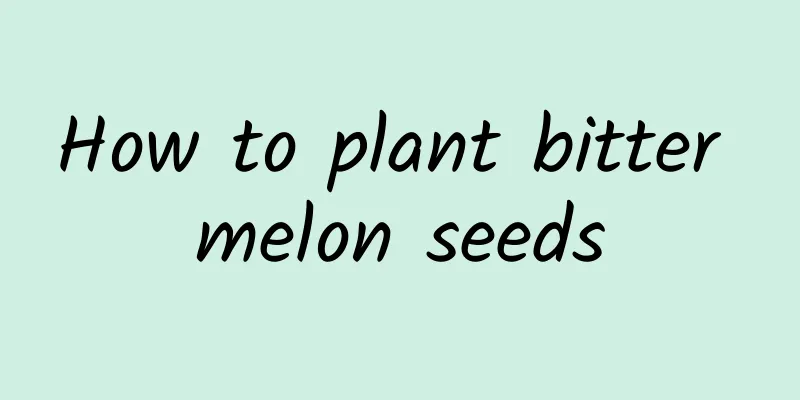Cultivation methods and precautions of red plum trees Precautions for transplanting red plum trees

|
The red plum tree is relatively easy to maintain. The red plum tree has a relatively low demand for water. During maintenance, if watering is too frequent, it will cause excessive water accumulation, causing the red plum tree to lose vitality and die. It can be watered once every 7 days. How to grow red plum trees1. Pot soil When caring for the plants, you need to use soil with good air permeability and drainage capabilities . It is best to change the soil after 1-2 years of cultivation and ensure the integrity of the soil structure. 2. Watering The red plum tree is relatively drought-resistant and has a relatively low demand for water. During normal care, it does not require a lot of watering, just keep the soil moist . 3. Lighting The red plum tree must be protected from direct sunlight during its growth process, especially in the scorching sun in summer. Direct sunlight will burn the leaves of the red plum tree, so proper shading is needed. 4. Fertilization The red plum tree has a relatively large demand for nutrients during its growth period. Fertilizer can be applied once every 14 days , but high concentrations should not be applied. Red plum tree maintenance precautionsWhen caring for red plum trees, pay attention to ventilation , otherwise they are more susceptible to diseases and pests, and ensure proper ventilation. Because red plum trees are very susceptible to powdery mildew in a high temperature and unventilated environment, if unfortunately infected, the diseased leaves and branches should be cleaned up in time to prevent secondary infection. Precautions for transplanting red plum trees1. Root disinfection When transplanting plum blossoms, the roots need to be soaked in potassium permanganate solution for 30 minutes before being taken out, which can disinfect and sterilize them. Alternatively, the roots can be soaked in a solution of carbendazim diluted with water , which can also achieve the effect of disinfection and sterilization. 2. Pot soil selection Precautions for transplanting plum blossoms: Coarse sand or gravel needs to be placed at the bottom of the flowerpot to increase ventilation and drainage capabilities. The soil for cultivation can be garden soil or humus soil . Adding some animal manure to the soil is very long-lasting and weak fertilizer, which can supplement nutrients. 3. Water the roots After transplanting, the soil needs to be fully watered , and then placed in a cool environment. No watering is required for a short period of time. After the seedling period is over , when the soil becomes dry, water it for the second time, and then resume the frequency of watering . 4. Avoid fertilizing Do not fertilize during the period of seedling acclimatization , as the nutrients in the soil are sufficient for the growth of plum blossoms. Otherwise, plum blossoms are prone to fertilizer damage. When new buds grow, apply a certain amount of thin fertilizer and bury it near the roots. Fertilization does not need to be too frequent, once a month is enough. 5. Transplanting in spring and autumn When transplanting, you need to choose a suitable season and climate to increase the chance of survival. Transplanting can be done in spring and autumn . When transplanting in summer, avoid high temperatures and strong light. The temperature in winter is too cold. If the roots are easily frostbitten after transplanting, avoid transplanting in winter. |
<<: How to cultivate and take care of purple pearls?
>>: How to grow gloxinia hibiscus and precautions How to grow gloxinia
Recommend
How to propagate colorful pineapple
Friends who choose this method must be cautious, b...
The efficacy and function of Hypericum
effect Hypericum is cool in nature and bitter in ...
Should boxwood be potted in a large or small pot?
Should boxwood be potted in a large or small pot?...
Is the pomegranate yield high? What is the yield per mu?
Is pomegranate high in yield? The yield of pomegr...
How to grow Rouge Cloud in winter, what to do if the bottom leaves wither
1. How to keep it in winter 1. Temperature contro...
What to do if the wintersweet leaves look burnt
1. Reduce watering: Reason: Wintersweet is a drou...
Can Chiyoda pine protect against radiation?
The function of Chiyoda pine: embellishment It is...
The reason why the leaves of the Venus flytrap are black in summer
1. The temperature is too high The Venus flytrap ...
Strawberry planting and harvesting time
Strawberry planting time Strawberries are usually...
Does the flower prefer shade or sun?
Does the flower prefer shade or sun? The flower o...
Can well water be used to water flowers directly or should it be left for a few days?
Water the flowers directly with well water Well w...
How to grow Spathiphyllum hydroponica
1. Remove the pot and prune the roots The Spathip...
What to do if the coral bean leaves wilt
Causes of withering If you want to deal with the ...
How to grow roses
1. Breeding environment 1. Soil: Choose soil suit...
How to prune thornberry
When to prune the thorny plum Pruning of the barb...









